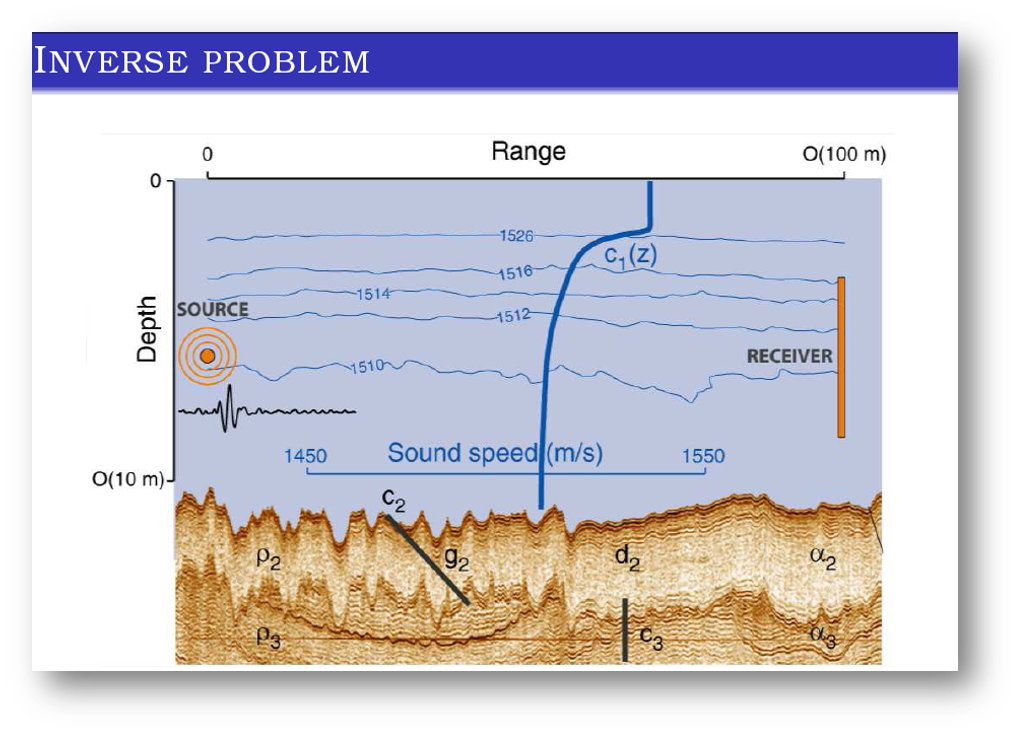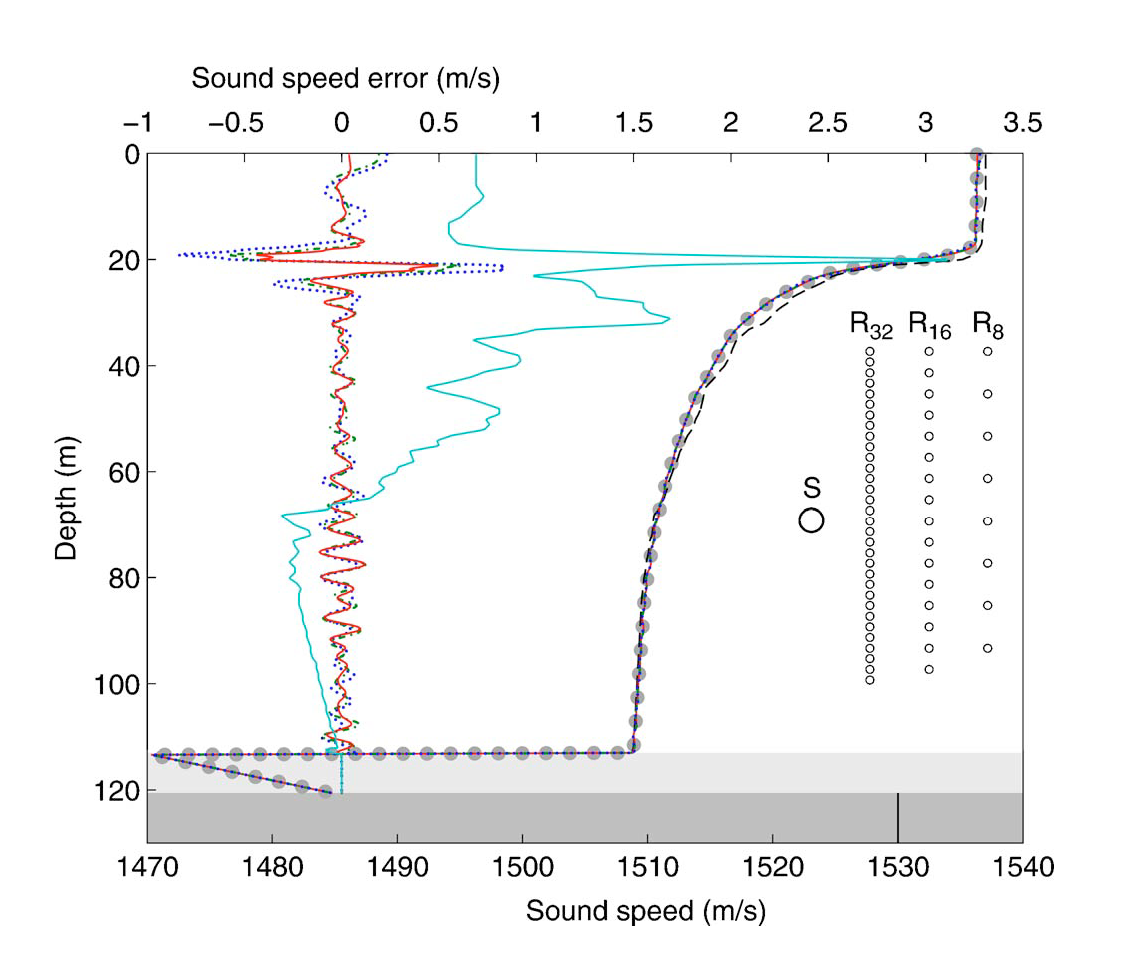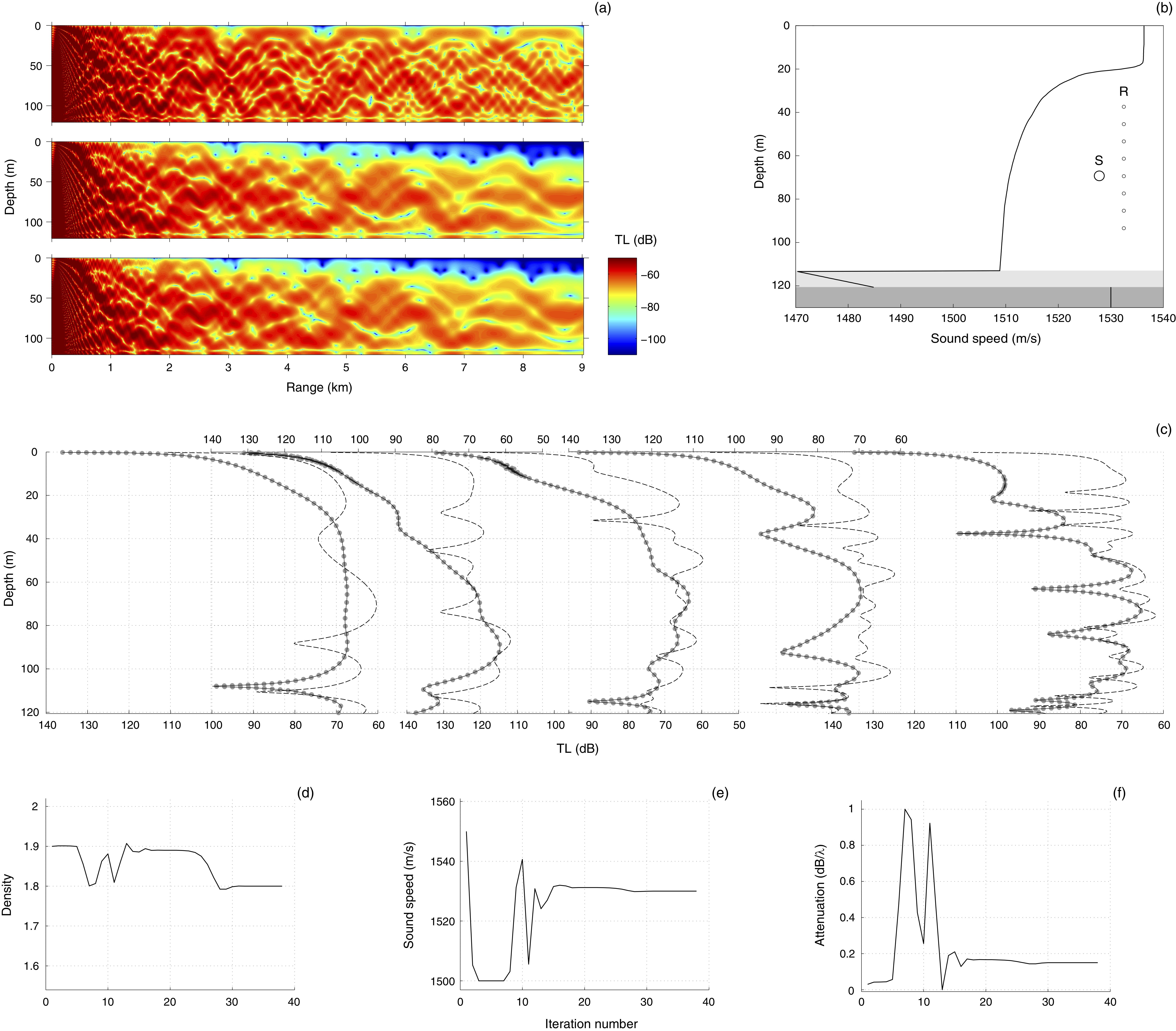underwater sediment mapping
ocean acoustic tomography
Knowledge o underwater sediment properties is important in different environmental contexts. It is needed for:
- sonar communications,
- biodiversity monitoring (see this twin),
- detection of buried objects (see this twin).
Over the ten-year period 2001-2011, my group was involved in numerous projects, leading up to a three-week mission at sea, where real-time inversion was performed using sockets, as described in this post.
Mathematically, we have a classical imaging inverse problem to solve:

The imaging problem: given a source and an array where measurements are obtained, find the properties of the unknown medium.
This model is readily adapted to a realistic context of underwater sedimentology characterization, as shown below.

The sediment characterization problem, including geoacoustics : given a source and a receiver array, where measurements are obtained, find the properties of the unknown medium, both water and seafloor.
We have successfully performed inversion of the sediment properties and the sound-speed profile in the water layer, using an adjoint approach (Hermand et al., 2006).


Ocean acoustics tomography for recovering the soud-speed profile (left). Geoacoustic inversion for recovering the sediment properties (right.) Click on images to zoom.